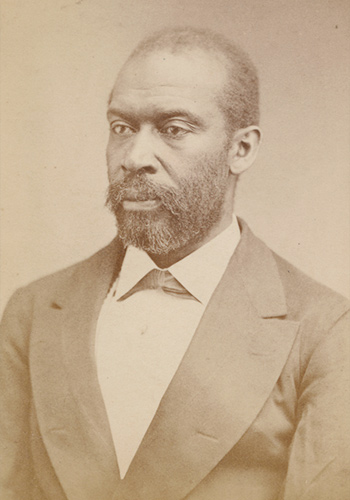
Scene in the House on the passage of the proposition to amend the Constitution, January 31, 1865. Library of Congress
Outcomes
Journalism went through a “perfect storm” during the Civil War, caused by technological advances, a history-altering event, and an increasingly literate audience demanding information.
Field reporters wrote stories about battles then sent the copy via telegraph to their editors. The story was printed, then delivered via train to thousands of Americans. This happened every week for most papers and daily for some. Publishers also freely shared other newspapers’ stories in their publications, giving readers more perspective, even when the perspective differed greatly with that of their regular readers.
Photographers like Mathew Brady and Alex Gardner put a human face on the cost of war and ushered in a new type of reporter: the photojournalist. Since the American Civil War, graphic photographs of war-torn areas have captured the world’s attention. Disturbing images have come from Syria’s civil war since 2011, including one of Aylan Kurdi, a three-year-old who died and whose body had washed ashore after his family had tried to escape to Greece. Debate continues as to how much such images shift public opinion and government policy.
By the end of the Civil War, newspapers and illustrated weeklies had become large-scale businesses. Their reach was nationwide. Influential editors wielded great power over politics, economics, and public opinion, which would extend throughout the rest of the nineteenth century and into the twentieth.

Joint resolution of the 38th Congress of the United States of America, proposing an amendment to the Constitution of the United States, abolishing slavery. Library of Congress
Greater access to information led to increased awareness and civic engagement, including public discussion of law and government policy. In the aftermath of the Civil War, Congress proposed and the public ratified the Thirteenth, Fourteenth, and Fifteen Amendments, freeing enslaved people, granting them citizenship, and guaranteeing Black men the right to vote.
Of course, access to equal rights was not simple or complete after the passage of these amendments. Freeing enslaved people didn’t change two hundred and fifty years of institutional racism. From the moment the Fifteenth Amendment was ratified, black codes; Jim Crow laws; and voter suppression policies like the poll tax, literacy tests, and voter ID laws have hindered African American access to the votes. Some of these issues continue to hinder voting rights for people of color and young people.
Take a moment to reflect on the primary sources you interacted with in this case study. Which primary source gave you the best window into what life was like at the time of the Civil War?
Discuss the following questions:
- How did the Civil War change the way the public gained access to information about major events?
- Compare and contrast the impact of photos from Mathew Brady and the image of Aylan Kurdi, a three-year-old whose body washed ashore after he and his family tried to escape the Syrian civil war.
- How did the public’s greater access to information help shape the debates over the Thirteenth, Fourteenth, and Fifteen Amendments, freeing enslaved people, granting them citizenship, and guaranteeing Black men the right to vote?






